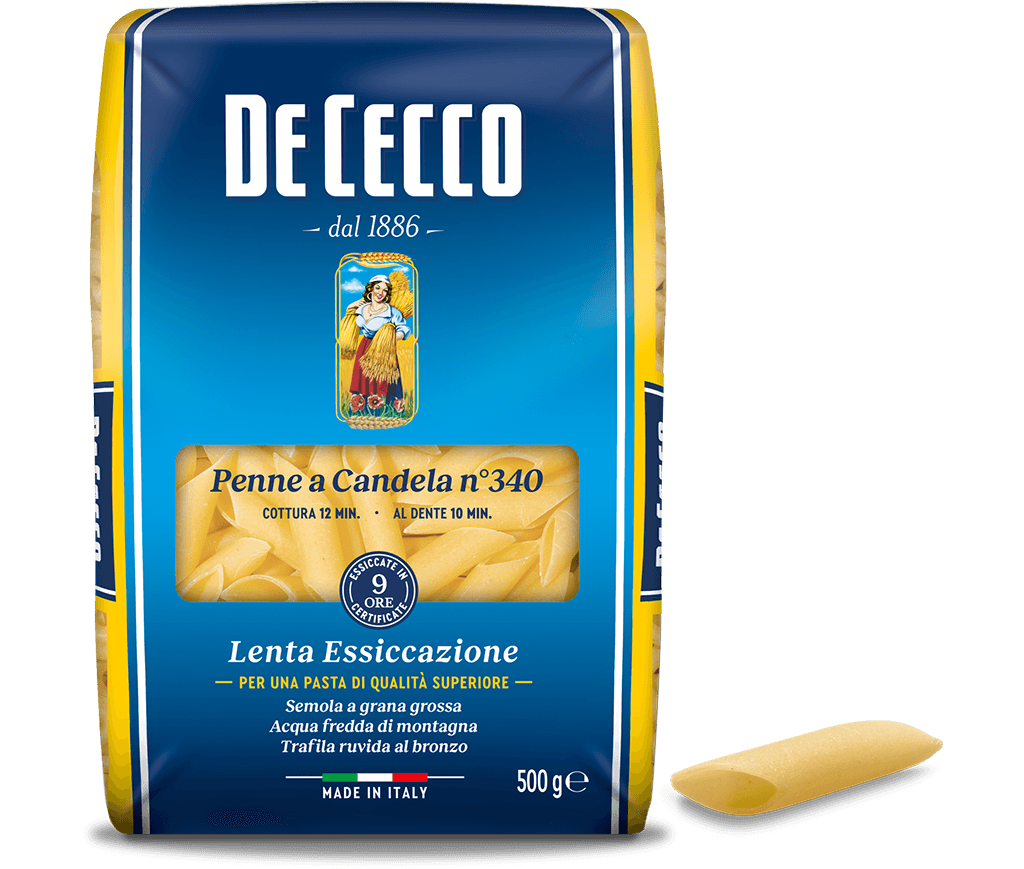Penne a Candela n° 340
Penne a Candela are a delicious variation of the classic Penne Lisce which are especially popular in southern Italy.
This pasta is much thicker and wider (than the Candele from which they take their name) and thanks to the size, can capture the sauce much better.
The lack of ridges is compensated for by a surprising softness which makes it exceptionally delicate on the palate. It is a delicate and sophisticated pasta which brings out the best in aromas, flavours and fragrance.
In Italian, the term "Penne" refers to the goose feather which was used historically to write with and was cut on a diagonal to achieve a really thin tip. The shape, obtained from a pasta tube, can be smooth or ridged, of varying length and has the typical diagonal cut of a quill.
Penne are one of the few types of pasta for which there is an exact date when it was created. Indeed, in 1865, a pasta-maker from San Martino d'Albaro (Genoa), Giovanni Battista Capurro, requested and obtained a patent for a diagonal cutting machine. The patent was important because it meant the fresh pasta could be cut like a quill without crushing it and in different lengths from 3 to 5 centimetres (mezze "half" penne or penne). The document preserved in the Central Archive of the State of Rome reads: "Up until now, a diagonal cut could only be made by hand with a pair of scissors which, in addition to being slow and time-consuming, also resulted in an irregular cut which flattened the pasta".
Penne a Candela are ideal for preparing oven-baked dishes, but they are also equally as good for pasta dishes served with meat sauces or vegetable sauces made with tomatoes with the addition of peppers, courgettes, aubergines, olives and capers.
Available in 500g pack.s
- Cooking time: 12 min - Al dente: 10 min
Our method
Attention, care, experience, quality at every stage: from our mill to your table.
Orzo n° 74






